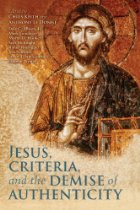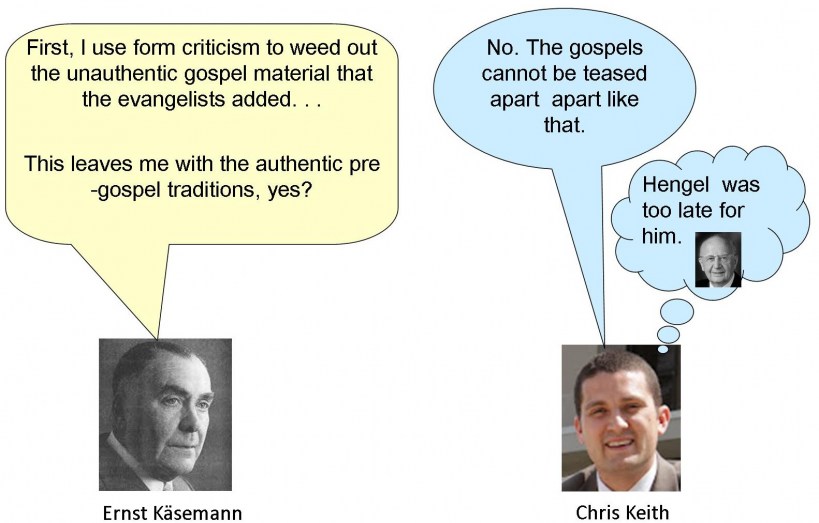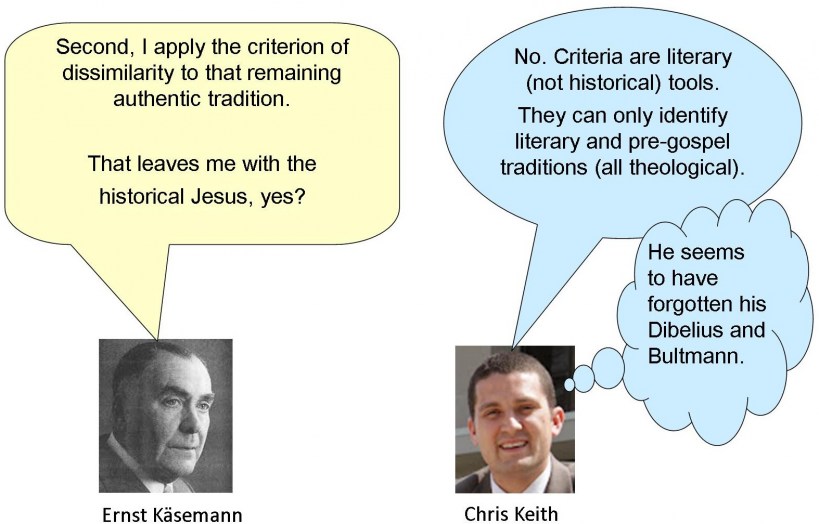 The above exchange is the message of Chris Keith’s opening chapter of Jesus, Criteria, and the Demise of Authenticity. My “idiot’s guide” is a tad unfair to Käsemann, however, since he did have willing accomplices and Keith mentions Norman Perrin and Reginald H. Fuller as guilty of formalizing more criteria of authenticity. The above may also be unfair to Morna D. Hooker whose arguments Chris Keith is supporting. But this post is about what I see as the good, the interesting and the missed opportunity in Keith’s chapter, so he gets the starring role above.
The above exchange is the message of Chris Keith’s opening chapter of Jesus, Criteria, and the Demise of Authenticity. My “idiot’s guide” is a tad unfair to Käsemann, however, since he did have willing accomplices and Keith mentions Norman Perrin and Reginald H. Fuller as guilty of formalizing more criteria of authenticity. The above may also be unfair to Morna D. Hooker whose arguments Chris Keith is supporting. But this post is about what I see as the good, the interesting and the missed opportunity in Keith’s chapter, so he gets the starring role above.
The title of this chapter is “The Indebtedness of the Criteria Approach to Form Criticism and Recent Attempts to Rehabilitate the Search for an Authentic Jesus”.
In the first part of this chapter Keith shows how the criteria used by historical Jesus scholars (criteria of embarrassment, of multiple attestation, of coherence, of dissimilarity, etc.)
- originated as a tool for form criticism;
- rely upon the discredited form-critical assumption that it is possible to distill pre-literary traditions from theological narratives of the Gospels;
- were designed to identify pre-gospel oral traditions, not actual history (or historical persons) behind those traditions.
After discussing this and briefly the second part of this chapter I will conclude with a return to Anthony Le Donne’s arguments for “triangulation” and “memory refraction”, this time with another critic’s more positive evaluation, than I raised in a recent post.
But before getting into the detail of the chapter here is my explanation of the “cartoon” above: Continue reading “The Rise and Fall of Criteria in Jesus Studies: Chapter 1 of Jesus, Criteria, and the Demise of Authenticity”


